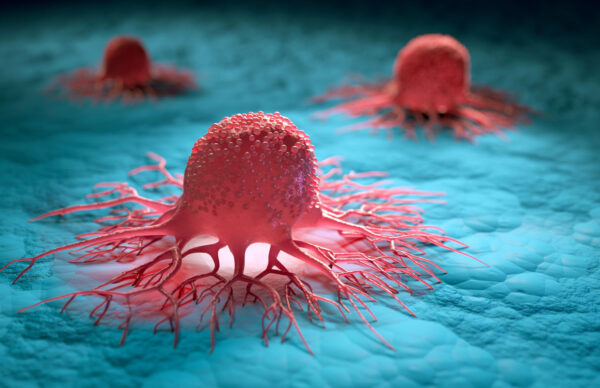
Successful targeting of cell-surface tumor markers by various methods has made identification of such molecules a potentially high pay-off goal for the creation of new anti-cancer therapies. These treatments include antibody-based approaches and adoptive immunotherapies like chimeric antigen receptor, CAR-T cell products. One attractive marker is B7H3, a member of the B7 ligand family. Many types of malignant cells exhibit overexpression, including breast, lung, prostate, and ovarian cancers, while expression by healthy cells is limited.1,2,3 This is important for limiting harm to nonmalignant tissues while maximizing antitumor cytotoxicity. However, given the non-zero level of expression of this surface marker by some healthy tissues, it is important to understand how prevalent B7H3 must be on the surface of cells, the antigen density, for an immune attack to be triggered.
Work recently published in a preprint article investigates the behavior of CAR-T cells and the formation of immune synapses.2 An immune synapse is the contact site between an immune cell and a malignant cell, where the receptor-ligand interplay determines effector function. Avidity, the overall strength of interaction between CAR-T cells and tumor targets, is a critical determinant of therapeutic efficacy. It encompasses factors such as CAR surface expression, target antigen density, and the strength of receptor-antigen interaction. In contrast, affinity specifically refers to the strength of the binding interaction between the CAR and the target antigen. Through precise measurements and analysis, researchers are working to understand and quantify the relationship between avidity, affinity, and CAR-T functionality. This may aid in the optimization of CAR-T therapies. By determining the threshold of antigen density required for activation, researchers can tailor CAR-T constructs to attack malignant cells while minimizing damage to non-neoplastic cells.
The significance of focusing on B7H3 as the target antigen extends beyond its prevalence in various cancer types. Its expression on tumor-infiltrating cells, including vascular endothelial cells, suggests its potential role in targeting not only cancer cells but also components of the tumor microenvironment. This multifaceted targeting capability means B7H3 may be a promising candidate for CAR-T therapy, suggesting the possibility of widely applicable cancer immunotherapy strategies.
Targets like B7H3 hold promise as a means of helping the immune system distinguish between healthy cells and malignant targets. As research into multitargeted CAR-T products moves forward, understanding which ligands to target, and how the binding affinity of each CAR-ligand pair impacts T-cell avidity can help close off antigen-escape routes which have often thwarted simpler cell therapies.
Reference:
1. Kontos, F., Michelakos, T., Kurokawa, T., Sadagopan, A., Schwab, J. H., Ferrone, C. R., & Ferrone, S. (2021). B7-H3: An Attractive Target for Antibody-based Immunotherapy. Clin Cancer Res, 27(5), 1227–1235. https://doi.org/10.1158/1078-0432.CCR-20-2584
2. Barisa, M., Zappa, E., Muller, H., Shah, R., Buhl, J., Draper, B., … & Anderson, J. (2024). Functional avidity of anti-B7H3 CAR-T constructs predicts antigen density thresholds for triggering effector function. bioRxiv, 2024-02.
3. Yang, S., Wei, W., & Zhao, Q. (2020). B7-H3, a checkpoint molecule, as a target for cancer immunotherapy. International Journal of Biological Sciences, 16(11), 1767–1773. https://doi.org/10.7150/ijbs.41105
